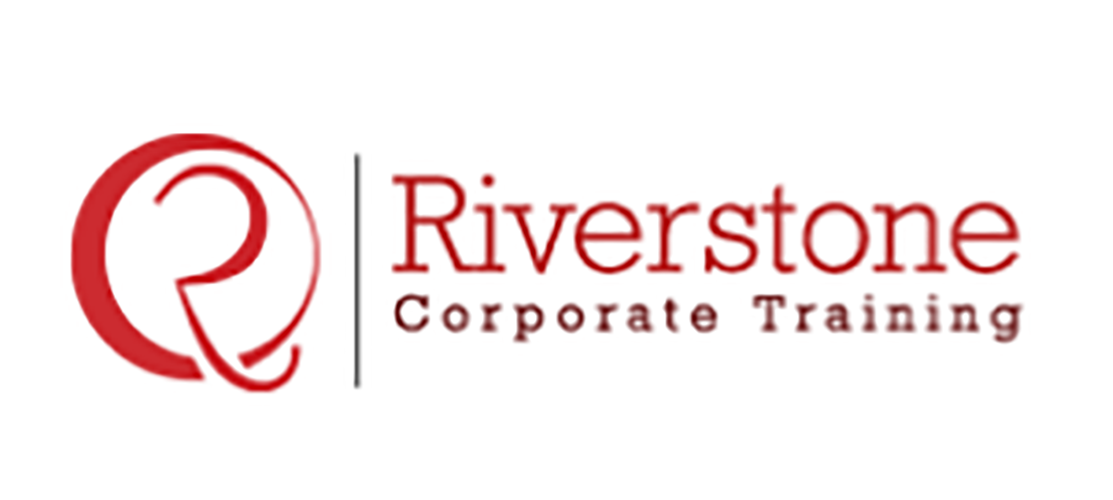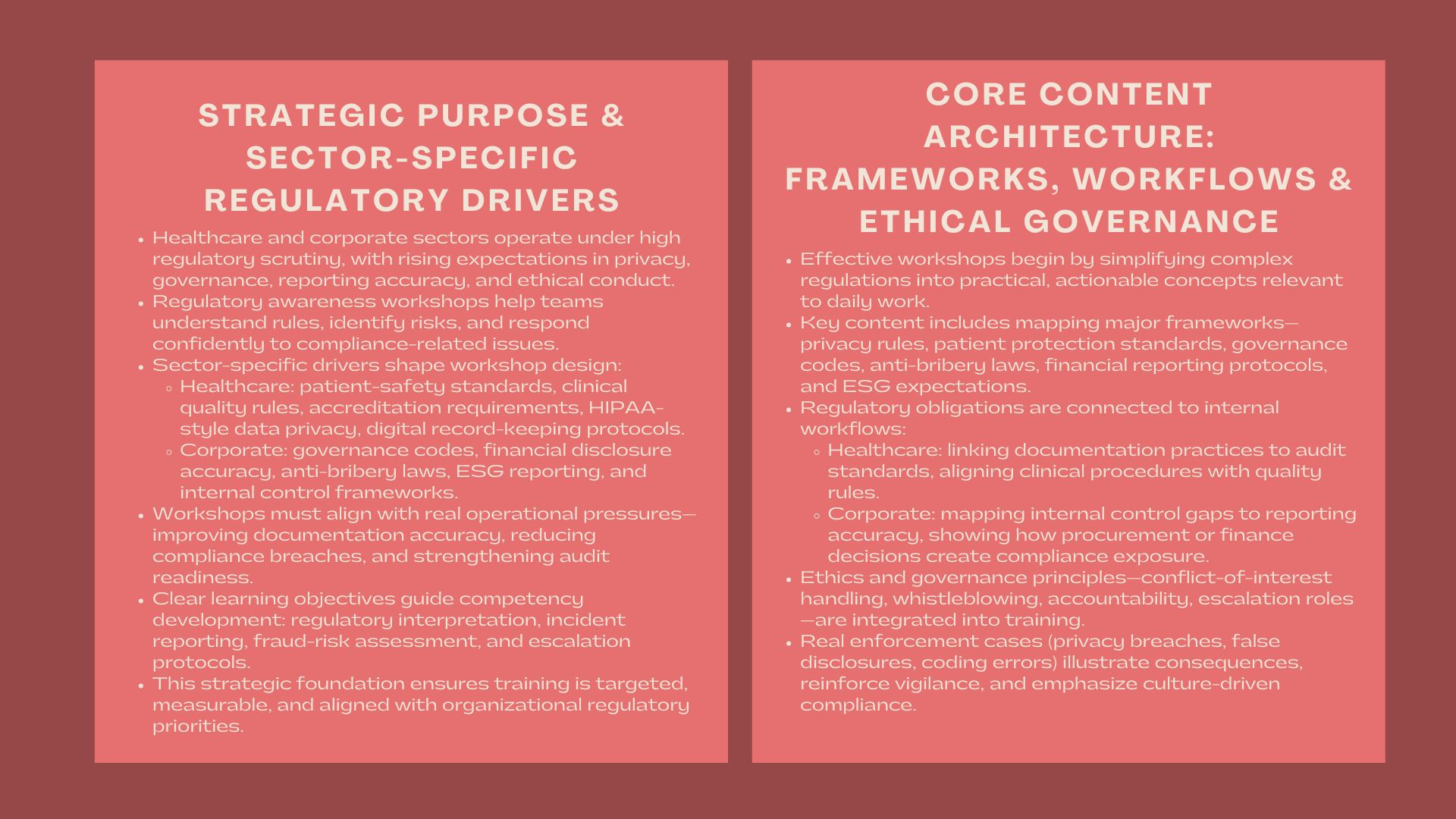Structuring Regulatory Awareness Workshops for Healthcare and Corporate Sectors
Introduction to Certified Regulatory Awareness Training
In the modern, more regulated business climate, healthcare and corporate organizations are experiencing an increasing demand to adhere to the changing rules, governing principles, reports, and risk management demands. The violation of regulations may lead to the financial fines, unfriendly reputation, operational issues, and even legal actions. As regulation systems have been vertically extended throughout the world, including healthcare privacy legislation and corporate disclosure requirements, companies are finding the necessity to optimize their internal regulatory literacy.
Organization of an effective regulatory awareness is a crucial role in bridging the knowledge gaps, enhancing across-function knowledge, and making sure that the teams react to compliance risks in a confident manner. The workshops have to strike the right balance between theoretical and practical applications so as to enable the professionals to understand and apply regulatory requirements in practical scenarios.
1. Defining Strategic Purpose of Regulatory Awareness Workshops.
1.1 Remarking on the Different Regulatory Forces Influencing every Sector.
Healthcare and corporate spheres have entirely different expectations of the regulatory ones as they affect the way workshops are organized. The healthcare organizations are in the environment that is characterized by the patient safety requirements, clinical quality rules, data privacy rules, and accreditation requirements. Compliance failures may have a direct impact on patient outcomes and organizational credibility, including the accuracy of medical records to protecting the confidentiality of patients.
Regulatory needs that face corporate sectors are however based on governance, reporting transparency, anti-corruption baseline, financial disclosure accuracy, and operational risk management. Internal control systems and audit preparedness are required by board oversight, expectations of the shareholders and convergence of regulatory practices globally.
They have to be reflected in workshops, which should provide industry-related content based on the issues that participants work with. In the healthcare sector, this is in the form of modules that are consistent with quality compliance frameworks. Within the company community, it can be focused on the system of governance or risk management requirements. This is where a healthcare compliance and regulatory awareness training program becomes particularly important in shaping a compliant culture within clinical and administrative units.
1.2 Establishing Clear Learning Outcomes and Participant Competencies
Training programs must be relevant to the maximum, so a set of clear competencies to be developed by the participants must be stated. Healthcare teams may find such competencies as regulatory interpretation, error reporting, patient safety awareness, and audit preparation. In the case of corporate teams, the competencies can be directed at governance functions, fraud risk evaluation, regulatory reporting periodic, and protocol of stakeholder communications.
These training objectives can be put in context using real-world examples. A hospital can be interested in minimizing the breaches of disclosures by enhancing the knowledge of data-handling laws. One of the ways that the corporation can seek to improve the quality of board reporting is by educating the managers to escalate regulatory risks. An effective competency framework keeps the content of a workshop focused, measurable and in line with organizational regulatory priorities.
2. Creating the Core Content Architecture of Regulatory Awareness.
2.1 The chapter begins by presenting the concept of regulatory frameworks and the implications of regulatory frameworks
An effective regulatory workshop will play off by mapping the major frameworks that will guide the operations in the sector. This can be privacy legislation, patient protection, clinical quality measures, and digital record keeping standards in the field of healthcare. In the case of corporate teams, this entails codes of governance, anti-bribery laws, financial reporting procedures, and expectations of ESG disclosure.
Instead of confusing the participants with legal terminologies, the workshop ought to make regulatory language straightforward into practical ideas. The participants need to be aware of not only what the rules demand, but also their significance and the way they manipulate the day-to-day processes. Examples of cases, like a healthcare organization that was punished because of improperly handled patient information or a company that was fined because of misleading disclosure, can be used to make participants think of the consequences and realize there is a stake in it.
2.2 Relating Regulatory Obligations with Internal Workflows.
However, compliance risks tend to arise as a result of operation failures, as opposed to a deliberate malady. Thus, workshops should show how the regulatory expectations can be proved in their interaction with daily working processes, departmental tasks, and decision making.
This can be in case of healthcare where a patient documentation practice can be tied to the audit requirements or showing how clinical practices comply with the quality standards as provided by the regulations. At the corporate level, it can be mapping internal control deficiencies that impact the accuracy of financial reporting or showing how procurement malpractices can result in compliance violations.
These links assist the participants in realizing their contribution to the compliance to the workshop by transforming a workshop into something conceptual to something operational.
2.3 The application of Governance, Ethics, and Accountability Principles.
Regulatory awareness should not only focus on the legal requirements but also address the topic of organizational ethics and governance culture and responsible business practices. Such themes as conflict of interest management, whistleblowing procedures, responsibility of escalation, and internal oversight framework should be investigated by the participants.
Real case studies (including examples of corporate governance failure resulting in shareholder loss or ethical malpractice resulting in distrust of the organization) can serve to guide participants to appreciate the role of behavior, culture, and leadership in determining the result of compliance. This combined strategy is a guarantee that the workshops do not only foster rule-following but also ethics-based decision-making in complicated scenarios.
3. The use of Practical Simulations and Application Exercises.
3.1 There are typical compliance scenarios that are used in role-playing.
Regulatory concepts are real through practical role-playing exercises. Healthcare participants can train to act upon patient data requests, manage medical documentation discrepancies or report clinical safety events. Corporate actors can conduct a role-play of oversight meetings, probe possible violations of compliance, or answer a regulatory question.
These practice scenarios are reflections of the real world pressures, and they train the participants on how to be able to make compliant decisions despite time pressure, conflicting priorities, or incomplete information. Going through such simulation situations, they can strengthen their customs of meticulous recording, suitable escalation, and risk-sensitive judgment.
3.2 Practical Study of Compliance Frailties and Enforcement Cases.
The examination of the cases of enforcement enhances insight of what has gone wrong and how it might have been avoided. In healthcare facilities, teams can review the cases of incorrect coding, privacy violation or non-conformance to the accreditation criteria. Within a corporate setting, a team can examine regulatory fines arising out of internal control deficits, dubious payments or false disclosures.
The participants evaluate the root causes of the problem, including the lack of oversight, the lack of training, or the lack of documentation, and explain what other measures might have alleviated the danger. This reflective is an operationally aware and critical thinking process.
3.3 upgrading Documentation, Reporting and in-house communication skills.
The state of regulatory soundness relies much on the practices of documentation and communication. The workshops should provide the participants with a guideline on how to document compliance activities, construct documentation that is audit ready, and how to escalate risks.
In case of corporate teams it entails how to summarize the governance risks to senior management or prepare regulatory submissions. In the case of healthcare teams, this entails proper patient documentation, quality reporting as well as clinical risk logs. The training enhances cross-functional interaction and the timely and precise flow of the information on risks in the organization. This is especially relevant for a corporate governance and regulatory risk awareness workshop, where clear communication is essential for compliance oversight.
4. Ensuring Long-Term Adoption and Regulatory Culture Reinforcement
4.1 Using Assessment Tools to Measure Competence Development
Assessments- quizzes, simulation performance review and document assessment- are used in establishing whether participants have taken vital concepts. The evaluation of competence is a clue to the workshop providing practical impact instead of theoretical exposure.
4.2 Refresher Sessions and Continuous Learning Programs.
The demands of the regulation change very quickly. Thus, the continuous refresher training, annual updating, and micro-learning modules with a specific focus become beneficial to organizations to keep them aware. The culture of compliance can also be maintained with continuous reinforcement despite the changes in regulations.
4.3 Unlocking Digital Compliance Surveillance.
Regulatory alignment over the long term can be facilitated by using digital platforms, including compliance dashboards, automated reporting systems, and audit-tracking systems. A workshop can have short presentations of these tools so that the participants can incorporate the use of technology into day-to-day compliance practices.
Conclusion
The organ awareness programs on healthcare and corporate regulation are very instrumental in enhancing compliance preparedness, governance maturity, and organizational integrity. These workshops prepare the employees to handle regulatory requirements assuredly and proactively by customizing the content to suit the industry pressures, creating workplace simulations, developing governance skills, and enhancing lifelong learning. With the ever-changing regulatory environment across the world, organizations investing in formalized training will not only evade expensive violations but also develop a culture of accountability, transparency, and ethical leadership that will assist in long-term sustainability and trust.


